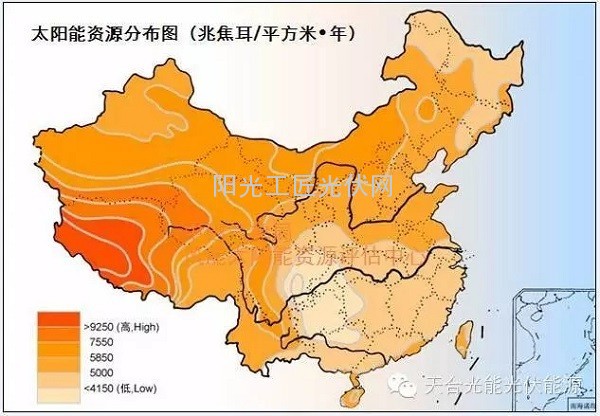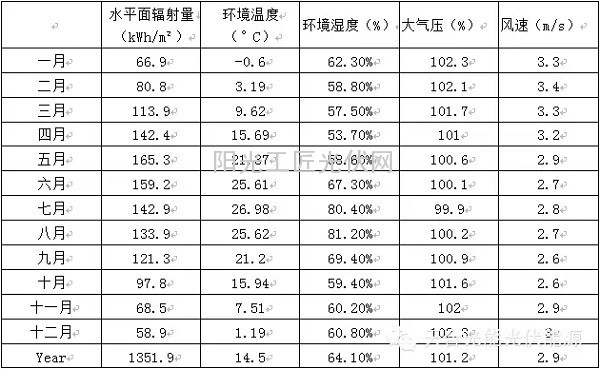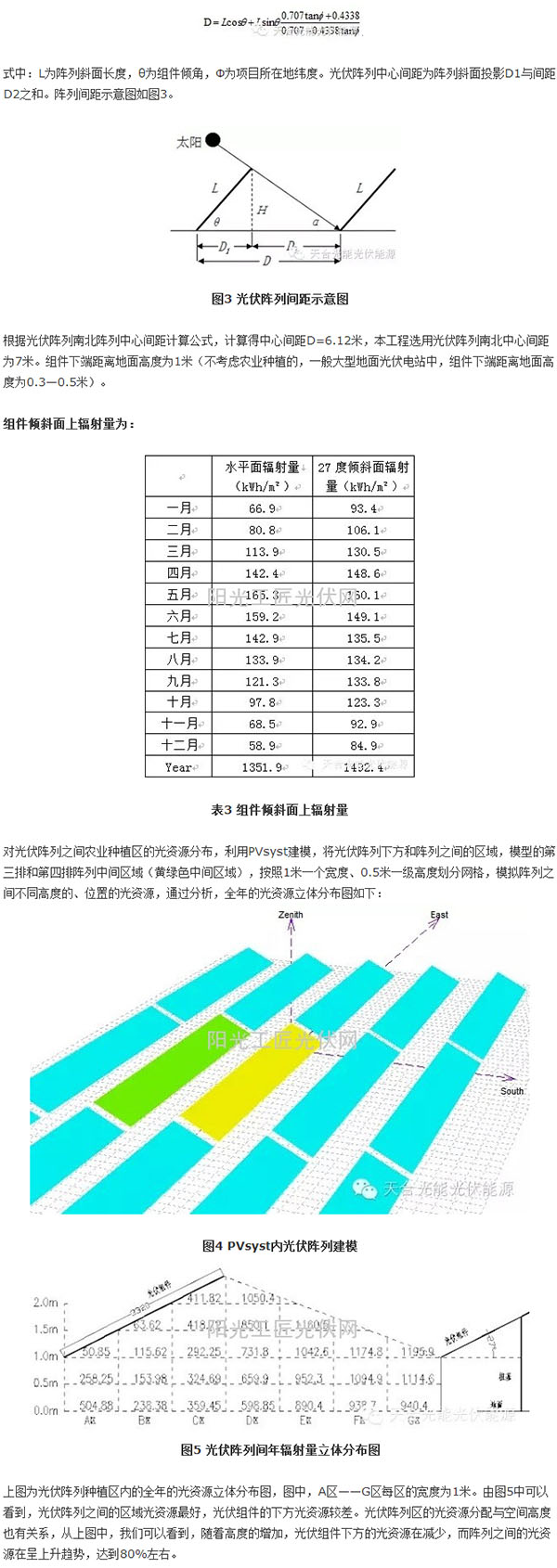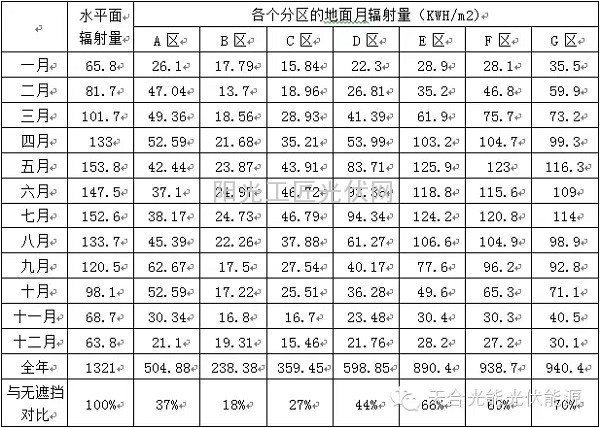Photovoltaic agriculture is a hot topic in the investment and construction of photovoltaic power plants in recent years. In order to break through the plight of land for photovoltaic power stations, the agricultural photovoltaic hybrid power station project has been rapidly developed at home and abroad, and the national policy has provided subsidies for photovoltaic agricultural projects.
In the rapid development of photovoltaic agriculture, the most confusing thing for PV practitioners and design institutes is that what is planted under ordinary photovoltaic power plants and under agricultural greenhouses is the most appropriate and most effective. At present, the status of the photovoltaic greenhouse project, which is the main form of agricultural and solar complementation, is alarming. For example, in May 2015 issue of “Light Energyâ€, No. 85 Zhangye’s “photovoltaic greenhouse or greenhouse photovoltaic†mentioned that a mountainous edible mushroom production base, In fact, there is a large area of ​​mountainous land under the guise of mushrooms. A 1,000-mu agricultural greenhouse in a state-owned enterprise in Jiangsu has been connected to the grid for power generation, but the underground greenhouse is a weed. Therefore, how to combine PV power plants and agriculture perfectly? It is urgent to solve the problem of planting crops. This issue needs to be further studied. This article uses light resource analysis. As a topic to explore related issues.
First, the significance of light to all things
Regarding God's creation of all things in the universe in six days, the record of Genesis is written as follows: On the first day, God said that if there was light, there would be light. On the second day, God said that if there was a sky, there would be a sky; In three days, God said that land and sea were necessary, and there was land and sea. On the fourth day, God said that if there were the sun and the moon, there would be the sun and the moon. On the fifth day, God said that there must be fish and birds. With fish and birds, on the sixth day, God said that animals and people are needed, and there are animals and people.
From God's creation of all things, we can see that with light we can make everything. Light is radiation that solar radiation can project onto the Earth's surface in the form of electromagnetic waves. The light mainly comes from solar radiation, and the light of other stars only occupies a very small part. Light is one of the most important ecological factors in life. All life on earth is maintained by the solar radiant energy that enters the biosphere. Solar radiation not only brings light to the surface of the earth and water, but also directly produces thermal effects. Light energy affects the physicochemical changes of organisms, resulting in a variety of ecological effects.
(1) Light provides a source of energy for the survival of animals and plants. Plants and animals respond to light with certain responses, such as vision, reproduction, development, behavior, and distribution.
(2) Light directly affects plant photosynthesis and pigment formation. Without light, green plants are difficult to survive. The lighting conditions of the water environment are far less than the land. Even in the upper layer of the water, the light intensity is much smaller than in the air, and it is always dark in the depths of the water body. Therefore, light has a particularly important ecological significance in the life of aquatic plants. Without sunlight, green plants cannot carry out photosynthesis and they cannot survive. Light affects not only the life of plants but also the distribution of plants. Among the terrestrial plants, some can only grow well under strong light, such as pine, fir, willow, alfalfa, corn, etc. Some may only grow well under the light of the lower layers of the jungle, such as medicinal plants, ginseng, and three. Seventh.
(3) The important significance of light to animals is, on the one hand, an indirect relationship that occurs through the dynamics of plants and other environmental factors. On the other hand, it mainly plays a signaling role and has a great influence on animal behavior and physiology. In some cases, light is one of the environmental factors required in animal life. Sunshine, the impact on animals is also very obvious. Sunshine can affect the body color of animals. For example, most fish have darker backs and shallower abdomen, which is related to the sun's exposure. Light can also affect the growth and development of animals. Some people have done this kind of experiment: The locusts were cultured under conditions of continuous absence of light, and the resulting individuals were mostly unemployed; the larvae were cultured under alternating light and dark conditions and the resulting individuals were mostly winged. However, the profound effects of light on animals have not been fully understood in many aspects, because the effect of light on organisms may be direct or indirect, and it may also work through the influence of other environmental factors.
Light resources are the core elements of photovoltaic power plant construction. When conditions such as site and power grid are appropriate, photovoltaic power stations can be built, and Gobi beach and mountainous areas can all be used. However, water shortage areas such as Gobi beach and mountains may not be suitable for agricultural production. There are many factors that affect the growth of plants and animals, such as sunlight, temperature, water, air humidity, nutrients in the soil, and air components. Among them, sunlight and temperature have the greatest impact on crops, while photovoltaic power plants have limited impact on the ambient temperature, and the temperature of photovoltaic greenhouses is also adjustable. Therefore, this paper mainly analyzes the distribution of light resources in photovoltaic power stations and agricultural lighthouses.
II. Analysis of light resources in the project location
2.1 Distribution of China's Optical Resources
China is one of the countries with abundant solar energy resources. The annual sunshine hours of over 2/3 of the country's total area is greater than 2000 hours.

China's solar energy resources distribution map
According to the radiation intensity of sunshine, China is divided into four categories.
One area (the most abundant zone)
The annual radiation amount is above 6300MJ/m2. It mainly includes the Tibetan Plateau, northern Gansu, northern Ningxia, southern Xinjiang, northwestern Hebei, northern Shanxi, southern Inner Mongolia, southern Ningxia, central Gansu, eastern Qinghai, and southeastern Tibet.
Class II area (very rich zone)
The annual radiation amount is 5040-6300MJ/m2. It mainly includes Shandong, Henan, southeastern Hebei, southern Shanxi, northern Xinjiang, Jilin, Liaoning, Yunnan, northern Shaanxi, southeastern Gansu, southern Guangdong, southern Fujian, northern Jiangsu, and northern Anhui.
Three types of regions (richer bands)
The annual radiation amount is 3780 to 5040 MJ/m2. Mainly in the middle and lower reaches of the Yangtze River, parts of Fujian, Zhejiang, and Guangdong, there is much rain in spring and summer, and solar energy resources are available in autumn and winter.
Four types of areas (general band)
The annual radiation amount is below 3780MJ/m2. Mainly include Sichuan and Guizhou provinces. This area is the region with the least solar energy resources in China.
In the second and third regions, the annual radiation amount is not less than 3,780 MJ/m2, which is an area with abundant or abundant solar energy resources in China. The area is relatively large, accounting for more than two-thirds of the country's total area, and has good conditions for using solar energy. Although the solar energy resources in the four areas are relatively poor, they still have some use value.

Table 1 Division of Distribution of China's Optical Resources
2.2 Analysis of Optical Resources in the Project Location
This agricultural complementary project is located in Suzhou, Anhui. Suzhou is abbreviated as “Shangâ€, and the prefecture-level cities of Anhui Province and Suzhou City are located in the north of Anhui Province. The geographic location is 116°09′-118°10′E and 33°18′-34°38′ north latitude. Qilian is located on the coast, leaning against the Central Plains and known as the northern gate of Anhui Province.
Located at the southern tip of the Huang-Huai Plain, Suzhou is a semi-humid monsoon climate in the north temperate zone. It is a transitional zone where the cold and warm air meet in the north and the south. The monsoon climate is obvious. The climate in the four seasons in Suzhou is very variable. The winter season is relatively long. It lasts for four months and is relatively cold. The summer is hot and the duration is longer. The spring and autumn seasons are short, the climate is moderate, the rain is moderate, and the air is humid. The average annual rainfall in Suzhou is about 840mm, and the interannual variation of precipitation is large. The largest annual rainfall is 3.2 times the minimum annual rainfall. The rainfall from May to September accounts for three-quarters of the annual rainfall, often with heavy rain and heavy rain. In the form of extremely heavy rainstorms, floods can easily occur.
According to analysis of horizontal light resources in Suzhou, the annual radiation of the city is 1351.9 kWh/m2, which is 486.86 MJ/m2. It belongs to the third category of solar energy resources in China and is very suitable for the construction of solar photovoltaic power generation projects.

Table 2 Meteorological Elements in Suzhou
III. Analysis of different patterns of light resources in agro-optic complementation
3.1 The simple combination of mode 1 photovoltaic power plant and agriculture
The simple combination of photovoltaic and agriculture is to plant crops in the space between photovoltaic arrays. The two are structurally independent. They are combined with each other in the spatial layout and choose to plant low-grade crops, or increase the height of photovoltaic modules, and ensure the planting of crops. The height is lower than the PV array to avoid affecting the PV generation.
Photovoltaic power station construction plan:
Large-scale ground-based photovoltaic power plants of conventional design often use vertical double-row arrangement of photovoltaic modules. The photovoltaic power station constructed here can be designed with a vertical double row 2X22 of 260Wp photovoltaic modules installed on a support unit and 22 photovoltaic modules connected in series as a string. 1MW photovoltaic power station, equipped with two 500kW inverters and one 1000KVA local transformer. Each inverter is connected to a total of 549.12kWp of 96 strings of photovoltaic strings. Simulated by PVsyst, the best angle of the photovoltaic components in Suzhou is 27 degrees.
After determining the angle of inclination of the array of squares, it is necessary to pay attention to a reasonable spacing between north and south forward and rearward arrays to avoid shadowing before and after. The spacing between the front and rear rows is: the winter solstice (the longest day in the shadow of the object in the sun during the year). From 9:00 to 3:00 PM (real solar time), there is no shade between north and south PV modules. Fixed arrays do not adjust after installation. The formula for the center spacing of arrays where the PV arrays are not shielded is given in the "Design Specification for Photovoltaic Power Plants":

The percentage of terrestrial light resources in all regions in the total annual light resources is as follows:

Table 4 Ground Monthly Radiation of Each Partition
The analysis of the light resources for each month within each year of each subarea is given. Since the time required for the PV plant to be unobstructed is between 9:00 and 15:00 on the local solar solstice, the height of the winter crop is lower than the connection between the top of the front row module and the bottom row of the rear row assembly. This connection, that is, the design basis of the agricultural greenhouse roof.
The data in Fig. 5 and Table 4 is the distribution data of time and space light resources in the agricultural photo-complementary photovoltaic power plant. The time and space optical resource data simulation and analysis methods in conventional photovoltaic power plants are also the basis for the analysis of the distribution of light resources in photovoltaic greenhouses, photovoltaic greenhouses, and other various types of agricultural photovoltaic hybrid power stations.
Due to limited space, this paper can not discuss more about various types of complementary agriculture and light, and more in-depth analysis of the distribution of light resources, shadow occlusion situation, follow-up article to expand the types of complementary agricultural light and to add more light resource analysis. We welcome friends in the industry to continue to pay attention to the next article and welcome friends from the industry to discuss and study together.
Solid Wooden Blade Ceiling Fan Without Light
Modern Ceiling Fans Without Lights,Black Ceiling Fan No Light,Best Ceiling Fans Without Lights,No Blade Ceiling Fan
JIANGMEN ESCLIGHTING TECHNOLOGY LIMITED , https://www.jmesclightingfan.com